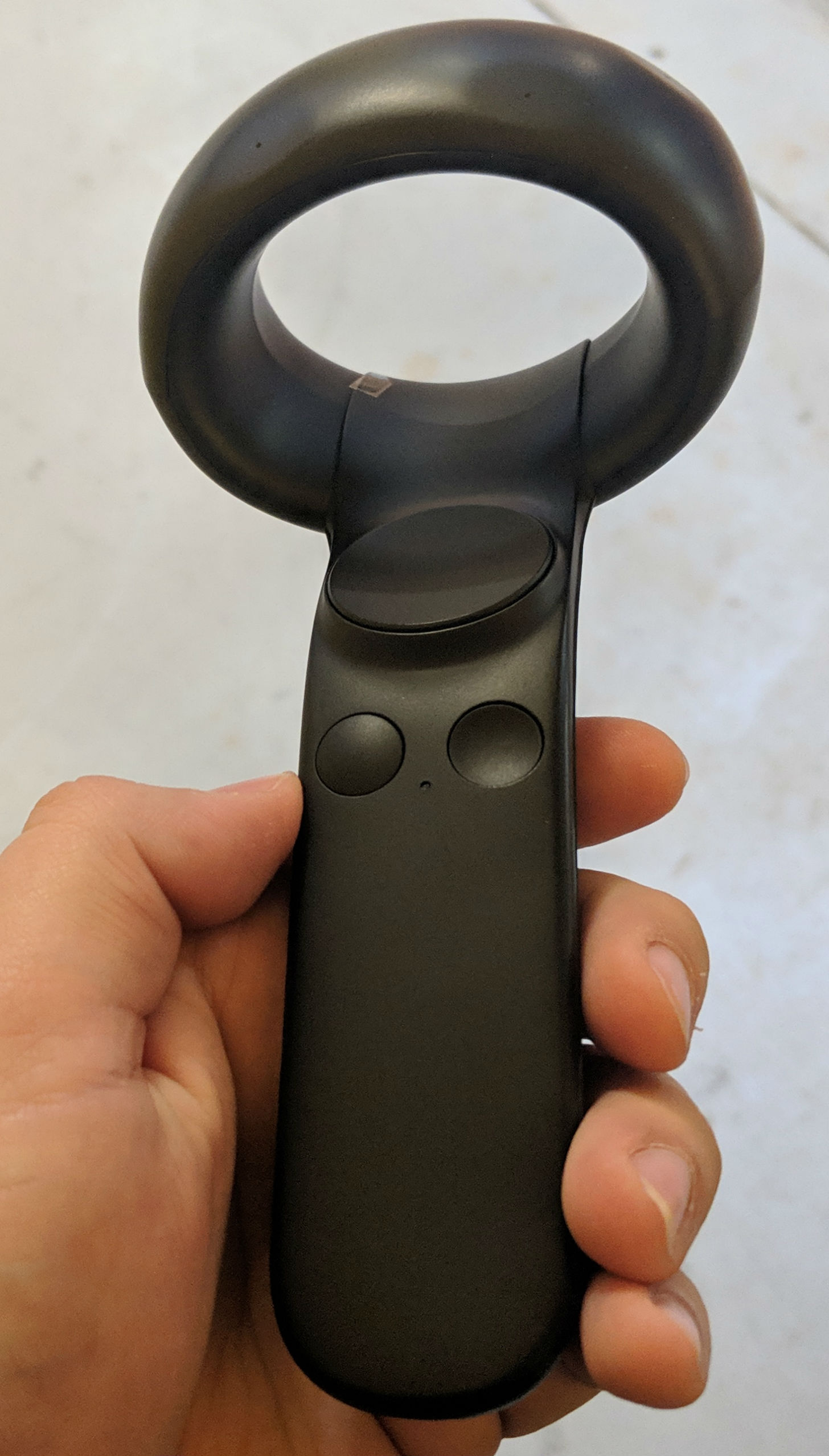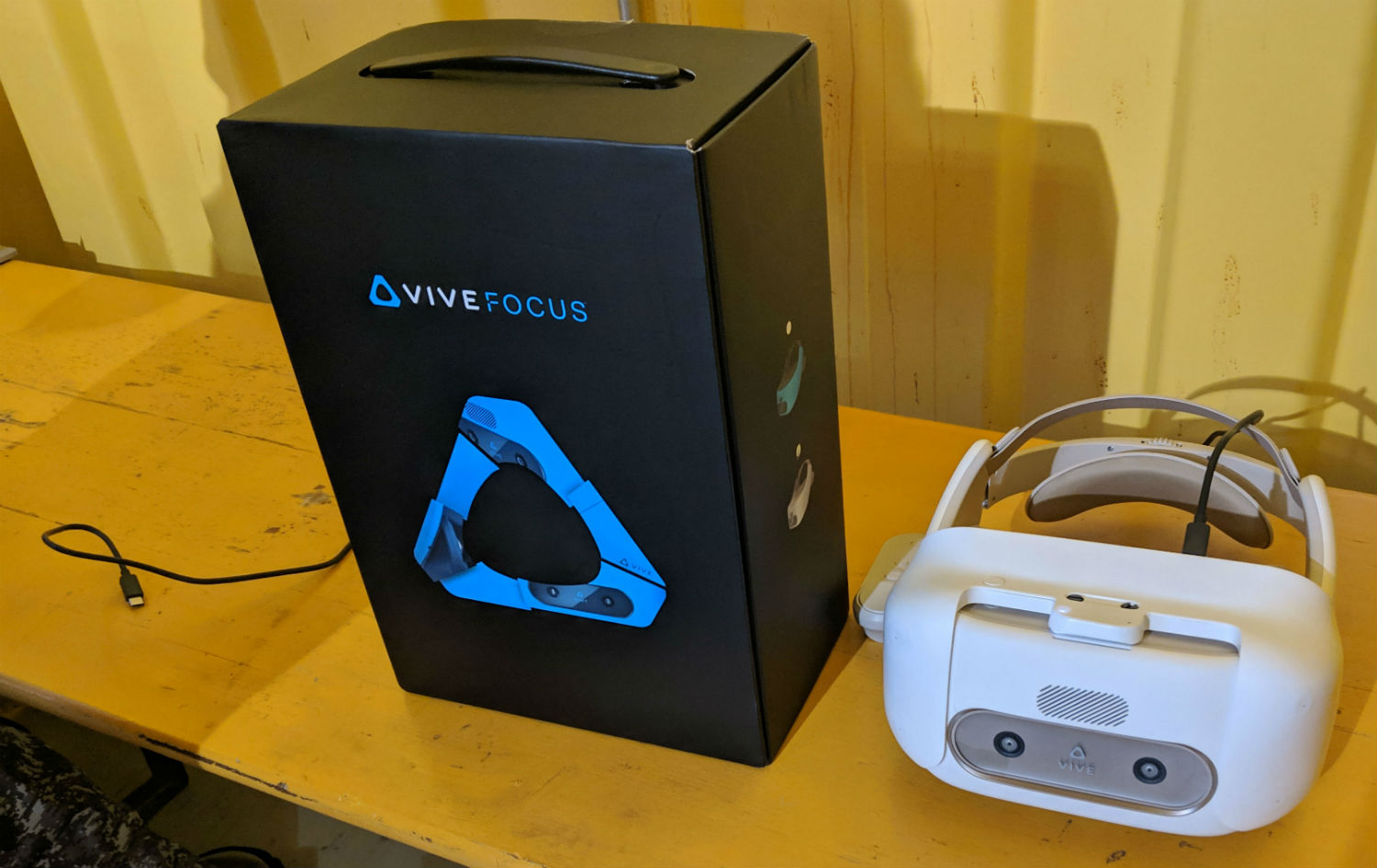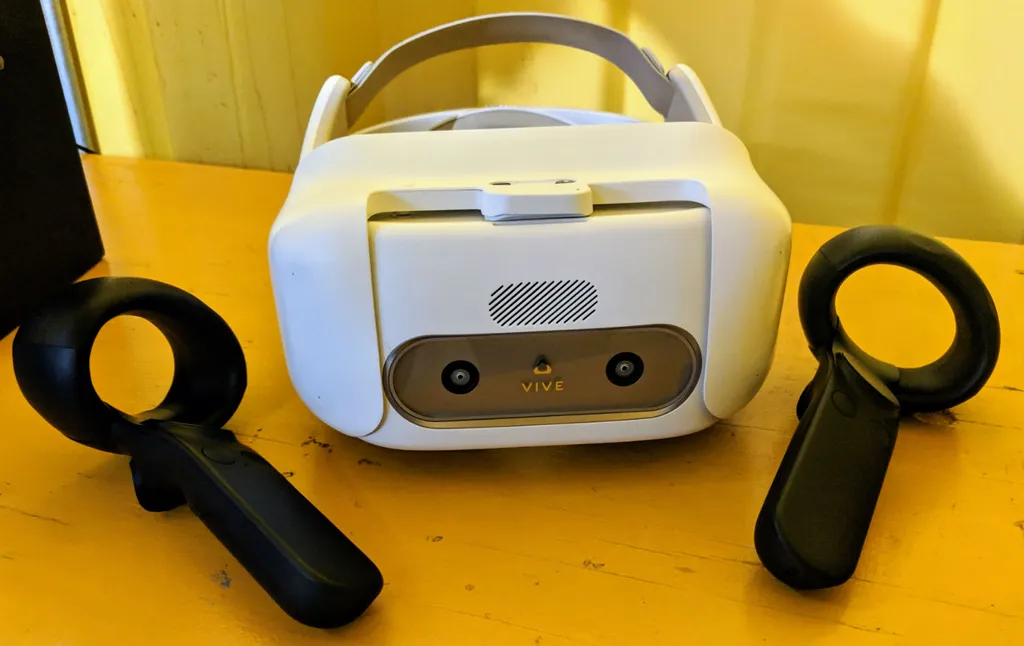At an Enterprise-focused HTC Vive press event in San Francisco, CA today we learned about the western release of the Vive Focus across North America and Europe, as well as the price point. But those will only release with a single 3DOF motion controller similar to the ones that come with the Oculus Go and Daydream View. HTC has opened dev kit applications for 6DOF motion controllers like the ones that come with the upcoming Oculus Quest headset (or the ones already out with the Vive and Rift) and HTC had a pair of those controllers available today for demos.
Hands-On With 6DoF Vive Focus Controllers

My demo was with Vive Sync, a professional collaboration platform. I’ll save details on the particular app for a separate story because I want to focus on the controllers themselves here.
To be clear, this is a developer kit. They aren’t finished and there is no timeframe on commercial availability at all. Now with that being said, I was very impressed.
Since Vive Sync is primarily a meeting app there wasn’t a whole lot of movement required. The ideal use case is just standing around, pointing, and talking, so I had to invent some movements to test the controllers and their tracking. First, rapid movement.
There was definitely some latency. If I were trying to play Beat Saber, for example, on this device with the 6DOF dev kit controllers, I think I would have had a ton of trouble. This might be fixed in time, but right now it felt almost as if my in-VR hands were a half second behind when moving very quickly. I never tried the Oculus Quest dev kit (Santa Cruz) but I’d imagine those controllers improved as well over development, as is usually the case.
Where they impressed me is with the accuracy of the positional and rotation tracking. No matter where I held the controller (even when I grasped the tracking ring itself) they never lost tracking. The only time it was an issue is if I put them behind my head or behind my back and then quickly put them back in front of my body. After a second or so delay they would be located again.

As a test of something I have done often in VR apps I tried reaching behind my back to teleport around. Vive Sync didn’t have smooth locomotion, just teleporting, so while I was speaking with a developer he asked me to back up so he could show me a 3D model inside the meeting environment. So, I instinctively reached behind my back, pointed, and clicked the trackpad to teleport like I’ve done in a million VR apps before and it worked just fine. To test this out more, I grabbed the laser pointer tool from the interface, reached behind my back, and could still point the laser through my VR body accurately. I don’t think I could accurately reach behind me and down to a table to grab something, but I also haven’t tried it.
One area the Oculus Quest controllers lacked is in tracking when you’re not looking at the ring itself. So if I rotated the controllers over in my hand like you would to bounce a ball on a tennis racket, they disappear. I wasn’t playing a game in real-time with the Focus 6DoF controllers but when I tried to replicate that movement they didn’t lose tracking. The latency and slight movement delay was still noticeable though, much more than with the latest Oculus Quest demo I tried at OC5.
In order to use the 6DOF controllers you have to clip on a faceplate on to the front of the Vive Focus that plugs into a port on the top.
Physically they’re extremely similar to the Windows VR controllers, although smaller, lighter, and without a control stick. They’re very comfortable and felt easy to use. The buttons below the trackpad seemed a little awkward, it was strange having two buttons below the trackpad instead of one above and one below like the standard Vive wands.
We’ll have more to report soon from the latest Vive update.






























